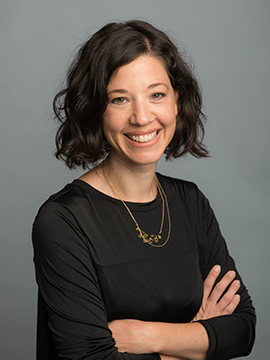Hagar Goldberg
Research Area
Education
Ph.D., Social Affective Neuroscience, The Weizmann Institute of Science, 2016
Master's of Science, The Weizmann Institute of Science, 2011
Bachelor of Science, The Hebrew University of Jerusalem, 2007
About
Over the years, I have collaborated with scientists across disciplines, artists, and educators, leading research and educational projects on the behavioural and neuronal mechanisms underlying empathy, creativity, human social-emotional perception, and learning. In my teaching, I take an educational-neuroscience approach, in which I’m translating neuroscience-based knowledge on learning and development, into applied educational practices (teaching the brain’s way, both in content, and design).
Teaching
Research
I am interested in social-emotional processes and their impact on brain development, wellbeing, and learning. I’m passionate about implementing neuroscience methods and knowledge in educational research and practice (educational-neuroscience). I believe that social-emotional neuroscience is key for leveraging neuroplasticity and supporting students’ learning and growth. This belief drives both my academic studies and teaching.
Publications
Goldberg, H., Hymel, S., McClure, R., Miller, M., Low, A. (2020). From Passive to Active Empathy: A New Paradigm for Assessing and Promoting Students’ Empathy [Poster presentation]. Educating Anxious Brains – Learning and the Brain Conference, San Francisco, United States.
Goldberg, H., Miller, M., (2020). Adolescence and the Brain: Cognitive Emotional and Social Development [Poster presentation]. Educating Anxious Brains – Learning and the Brain Conference, San Francisco, United States.
Strappini, F., Wilf, M., Karp, O., Goldberg, H., Harel, M., Furman-Haran, E., … & Malach, R. (2019). Resting-state activity in high-order visual areas as a window into natural human brain activations. Cerebral Cortex, 29(9), 3618-3635.
Hart, Y., Goldberg, H., Striem-Amit, E., Mayo, A. E., Noy, L., & Alon, U. (2018). Creative exploration as a scale-invariant search on a meaning landscape. Nature communications, 9(1), 1-11.
Goldberg, H., Hart, Y., Mayo, A. E., Alon, U., & Malach, R. (2017). Neuronal components of evaluating the human origin of abstract shapes. bioRxiv, 085902.
Goldberg, H., Christensen, A., Flash, T., Giese, M. A., & Malach, R. (2015). Brain activity correlates with emotional perception induced by dynamic avatars. Neuroimage, 122, 306-317.
Goldberg, H., Preminger, S., & Malach, R. (2014). The emotion–action link? Naturalistic emotional stimuli preferentially activate the human dorsal visual stream. Neuroimage, 84, 254-264.
Ramot, M., Wilf, M., Goldberg, H., Weiss, T., Deouell, L. Y., & Malach, R. (2011). Coupling between spontaneous (resting state) fMRI fluctuations and human oculo-motor activity. Neuroimage, 58(1), 213-225.
Nili, U., Goldberg, H., Weizman, A., & Dudai, Y. (2010). Fear thou not: activity of frontal and temporal circuits in moments of real-life courage. Neuron, 66(6), 949-962.
